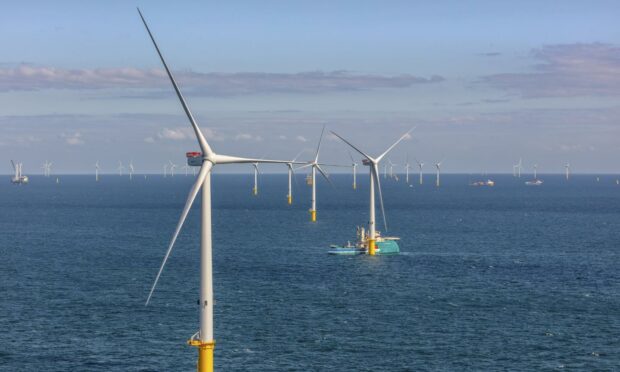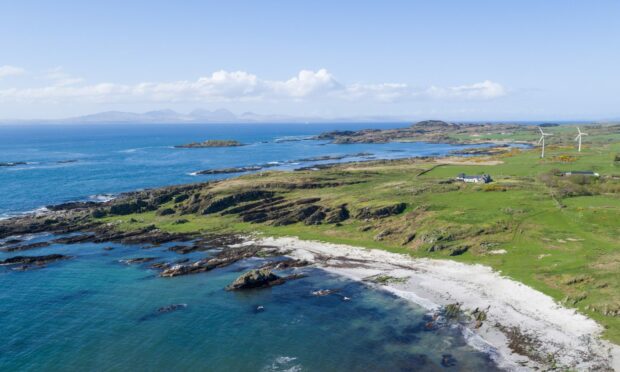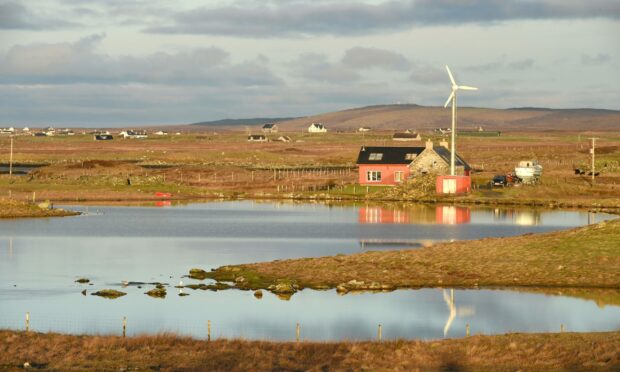Nicola Sturgeon has been urged to use a slice of an £800 million renewable energy windfall to “reimagine” Scotland’s future – and ensure communities benefit from the opportunities that are being “hoovered up” by the wealthy.
Community Land Scotland (CLS) has written to the first minister to ask her to consider establishing a new community wealth fund, backed by at least £100m.
The cash would be used to deliver a “paradigm shift” in the contribution of local communities, enabling groups to lead the pandemic recovery in Scotland, and the nation’s response to the climate emergency, by “scaling up” sustainable projects that have already proved hugely successful.
CLS, which represents community land owners who manage 560,000 acres, said the fund could be created using a reported £860m windfall from the Crown Estate Scotland auction of seabed plots for offshore windfarms.

The proposal has emerged amid growing alarm at the way wealthy individuals and private companies – some of whom have been dubbed “green lairds” – have been buying-up land and assets in Scotland in anticipation of the huge opportunities that are emerging in carbon offsetting and the green economy.
‘Green lairds’
Ailsa Raeburn, CLS chairwoman, said: “We all know what is amazing about Scotland and what contribution can be made from Scotland’s land to reaching net zero, but we’ve all been talking about the whole ‘green laird’ scenario, and how the private sector, and the already wealthy, are hoovering up all the opportunities.
“This is an opportunity for the community to get their foot back in the door and say, ‘with the next phase of renewables, to reach net zero, let communities be an equal partner in that’.”
Last year, CLS and the Community Woodlands Association produced a report outlining the various ways that community landowners “provided an anchor for local residents as the tide of infection flooded” during the Covid-19 pandemic.
Examples included the north of Lewis, where the Galson Estate Trust developed a communication system to contact its 1,900 residents, many of them elderly, in 800 households across 22 villages.
Long-term income
The proposed wealth fund would be used to support community groups develop ambitious projects that can help achieve multiple economic and social aims, such as easing the housing crisis, fuel poverty and other causes of depopulation in rural areas.
“If you look at organisations on Uist or Galson or Gigha, they’ve been able to develop their own renewable projects, and then take the income from that and reinvest that back into the local economy,” Ms Raeburn said.
“If you see all the stuff that’s happening on Gigha and Knoydart and places like that, it’s this whole idea of none of that wealth being extracted.

“So you haven’t got a landowner coming in, building 12 wind turbines and taking all of the income from those 12 wind turbines.
“If the community could build those 12 wind turbines on land that they owned, all of that income would go back into supporting local projects, affordable housing, better broadband infrastructure, and down to things like after-school clubs.
“It’s the potential here to create a fund which would allow communities to continue to generate long-term income for themselves from their own local natural wealth.”
Seabed auction
Crown Estate Scotland manages land, and virtually all seabed out to 12 nautical miles, which is owned by The Queen, with profits passed to the Scottish Government.
In July, it said 74 applications had been received from developers seeking to build projects across the 15 areas of seabed available for offshore wind energy schemes.
There is a target of making initial offers for the first option agreements to successful applicants in January 2022, and the exact fee total will not be known until then.
CLS want to see a portion of the profits reinvested in local community initiatives.
Calum Macleod, its policy director, said: “This is a unique opportunity to reinvest and reimagine how we work our way out of the Covid pandemic, and also address the climate emergency, in a way that puts communities front and centre of both the recovery and tackling climate change.
“So we’re calling for innovative policy thinking, using this potentially quite significant fiscal lever that the government has to hand, in terms of raising and distributing these revenues, in ways that will connect up these policy agendas, at a strategic level but also very clearly at the ground level as well, which would have significant positive repercussions, both for local communities and for Scotland as a whole.”
“This is a unique opportunity to reinvest and reimagine how we work our way out of the Covid pandemic, and also address the climate emergency, in a way that puts communities front and centre of both the recovery and tackling climate change.”
A Scottish Government spokesman said: “We are wholly committed to ending Scotland’s contribution to climate change by 2045 and will continue to empower communities to play a leading role in our just transition to net zero.
“While the payments generated from the ScotWind leasing round will not be known until next year, we are already engaging with stakeholders on potential options for using these funds, which will reflect our commitment to developing an offshore wind sector which benefits the communities of Scotland and ensures a just transition to net zero.”

